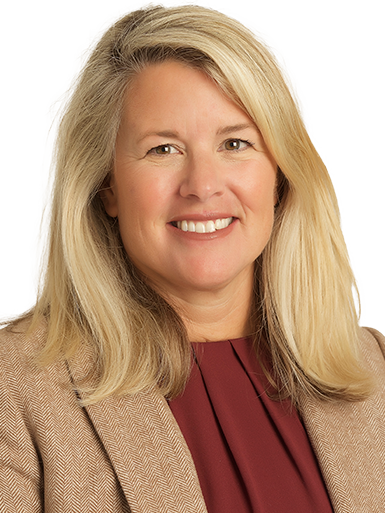Improving Budgeting Processes with Cloud-Based Tools
During AAFCPAs’ recent webinar, nearly 70 attendees joined AAFCPAs and Martus™ to discuss ways to streamline the budgeting process with the Martus cloud-based solution, which enhances financial planning and decision-making. AAFCPAs’ Robyn Leet, Partner, Business Process Assessments & Attestations and Wendy Smith, CPA, Consulting CFO, Process & Systems along with Martus’ Chris Grady and Joseph Plagge demonstrated how Martus integrates with ERP and accounting systems to improve efficiency and collaboration.
Many organizations reach a point where Excel is no longer a sustainable solution for budgeting—files become too large, formulas are prone to errors, and manual updates slow down decision-making. If your team has experienced these challenges, it may be time to consider a more scalable approach. Our webinar recording provides an inside look at Martus, offering a detailed demonstration of its capabilities and how it helps organizations transition to a more efficient budgeting process.
The full one-hour webinar was recorded and is available to view at your convenience.
We have also summarized below the highlights of the webinar for reader convenience.
Budgeting remains a time-consuming and error-prone process for many, who often rely on spreadsheets that lack real-time data and collaborative capabilities. As organizations grow, financial planning becomes even more complex, mandating tools that offer greater efficiency and accuracy while also streamlining workflows.
The Challenges of Traditional Budgeting
Many finance professionals are still relying on Excel for budgeting. While Excel is flexible, spreadsheets can grow cumbersome as financial data scales. Common challenges include manual entry, formula errors, version control challenges, and an inability to integrate with other financial systems. “We’ve seen workbooks that are actually works of art,” explained Robyn Leet, Partner, Business Process Assessments & Attestations at AAFCPAs. “But at some point, it becomes too cumbersome and risky to manage everything in spreadsheets.”
Beyond structural limitations, spreadsheet-based budgeting lacks real-time data updates, increasing the risk of errors. “You don’t know if formulas get disrupted. You don’t know if you’ve added the right cost centers or personnel,” she continued. “The risk of error increases dramatically.”
Moving Toward a More Efficient Budgeting Approach
Organizations looking to improve budgeting efficiency should consider solutions that offer:
- A User-Friendly Interface. Tools that simplify budgeting for finance professionals and non-finance users alike.
- Seamless Integration. Systems that sync with ERP and accounting software, ensuring real-time financial data updates.
- Collaborative Features. A structured workflow where department heads and key stakeholders actively contribute to the budgeting process.
- Automated Reporting and Forecasting. Real-time reporting tools that let users model financial scenarios and make informed decisions.
One such tool is Martus, which addresses many of the challenges organizations face in financial planning. Together with AAFCPAs’ Business Process & IT Consulting practice, Martus provides a structured, automated approach to budgeting that enhances collaboration and streamlines processes. AAFCPAs works with clients to evaluate integration capabilities between Martus and existing general ledger systems, ensuring a seamless transition. By designing workflows tailored to each organization’s budgeting and reporting needs, AAFCPAs helps clients maximize accuracy, efficiency, and productivity.
Key Features of Cloud-Based Budgeting Tools
1. Real-Time Reporting and Customizable Dashboards
A modern budgeting platform like Martus provides built-in financial reports and custom reporting tools that allow users to analyze financial data across various segments, such as grants, programs, or departments. The user-friendly interface ensures accessibility for both finance professionals and non-finance staff, making it easier to navigate and use reporting tools effectively.
2. Workflow Automation and Approvals
Budgeting often involves multiple stakeholders, which may cause delays when approvals are required. A centralized system for workflow automation reduces reliance on manual processes, ensuring that approvals are handled efficiently. By eliminating the need to exchange spreadsheets via email, organizations can minimize errors and improve overall productivity.
3. Scenario Planning for Better Decision-Making
Many organizations benefit from scenario planning tools that allow for modeling of different financial outcomes. This functionality helps organizations prepare for funding changes, operational adjustments, or economic shifts. “Scenario planning is more important than ever,” explained Robyn Leet. “Whether it’s modeling best- and worst-case funding scenarios or evaluating new staffing strategies, this approach allows organizations to make data-driven decisions.”
4. Personnel Budgeting and Allocations
Personnel costs account for a significant portion of budgets. Advanced budgeting tools help organizations allocate staff expenses across departments, projects, or funding sources. Users can budget at the employee level, adjust salaries for planned increases, and model benefits and tax expenses. Additionally, organizations can create multiple scenario plans within personnel budgeting, allowing for greater flexibility in forecasting different staffing strategies or compensation adjustments. “Companies are looking for a better way to plan for personnel,” Wendy Smith explained. “Having a system that provides that granularity allows for more strategic personnel planning.”
5. Integration and Data Synchronization
Budgeting platforms that integrate with existing ERP and accounting systems help in keeping financial data up to date, thus reducing the need for manual imports. “You don’t have to worry about manually updating cost centers, personnel, or accounts,” Robyn shared. “Automated synchronization makes budgeting more efficient.”
Implementation Considerations
When transitioning to a cloud-based budgeting system, organizations should consider implementation time, scalability, and user adoption. Martus, for example, may be implemented in six to eight weeks, allowing organizations to phase in features at their own pace while accessing built-in reports early in the process. “Flexibility is key,” explained Chris Grady. “Whether you’re a small nonprofit with a handful of users or a large organization with hundreds of budget contributors, finding a scalable solution is critical.”
By automating workflows, enhancing collaboration, and providing real-time insights, organizations can move beyond manual processes and create a more strategic financial planning model. A well-structured budgeting approach increases transparency, reduces inefficiencies, and fosters financial literacy across departments. “What we see is truly transformative,” Chris said. “Finance teams gain back hours of time, and organizations develop a culture of financial engagement that spans beyond the finance team.” For organizations looking to optimize their budgeting process, evaluating cloud-based budgeting tools can be a crucial step toward efficiency and better financial decision-making.
How We Help
AAFCPAs’ Business Process & IT Consulting practice helps organizations strengthen the connections between people, process, and technology to improve efficiency and reduce risk. We collaborate with clients to assess existing workflows, identify areas for automation, and implement solutions that drive sustainable improvements. Whether it is software selection, business process automation, or the strengthening of internal controls, we tailor our approach to align with organizational needs and strategic goals.
Our expertise extends beyond budgeting to include business intelligence, data analytics, and cybersecurity. We assist clients in designing dashboards, KPIs, and reporting structures that provide real-time insights into financial performance. Additionally, we help organizations enhance cybersecurity measures by assessing IT risks, implementing robust internal controls, and ensuring compliance with industry standards such as SOC, HIPAA, and NIST.
With a multidisciplinary team of technologists, CPAs, and business process improvement specialists, AAFCPAs provides pragmatic guidance on selecting and implementing the right financial technology solutions. By leveraging industry best practices and cutting-edge automation tools, we help clients streamline their budgeting processes, enhance collaboration, and make well-informed financial decisions.
These insights were contributed by Robyn Leet and Wendy Smith. Questions? Reach out to our authors directly or your AAFCPAs partner. AAFCPAs blog offers a wealth of resources related to Business Process Improvement. Subscribe to get alerts and insights in your inbox.


